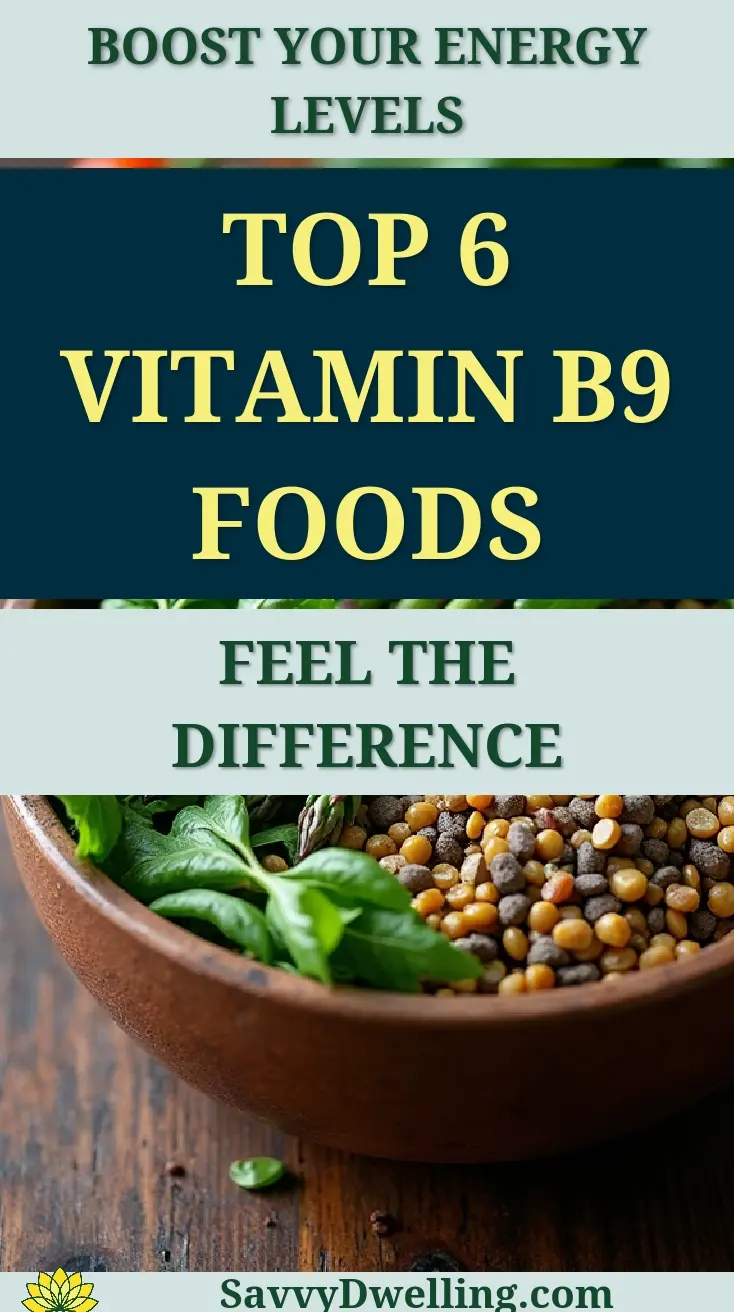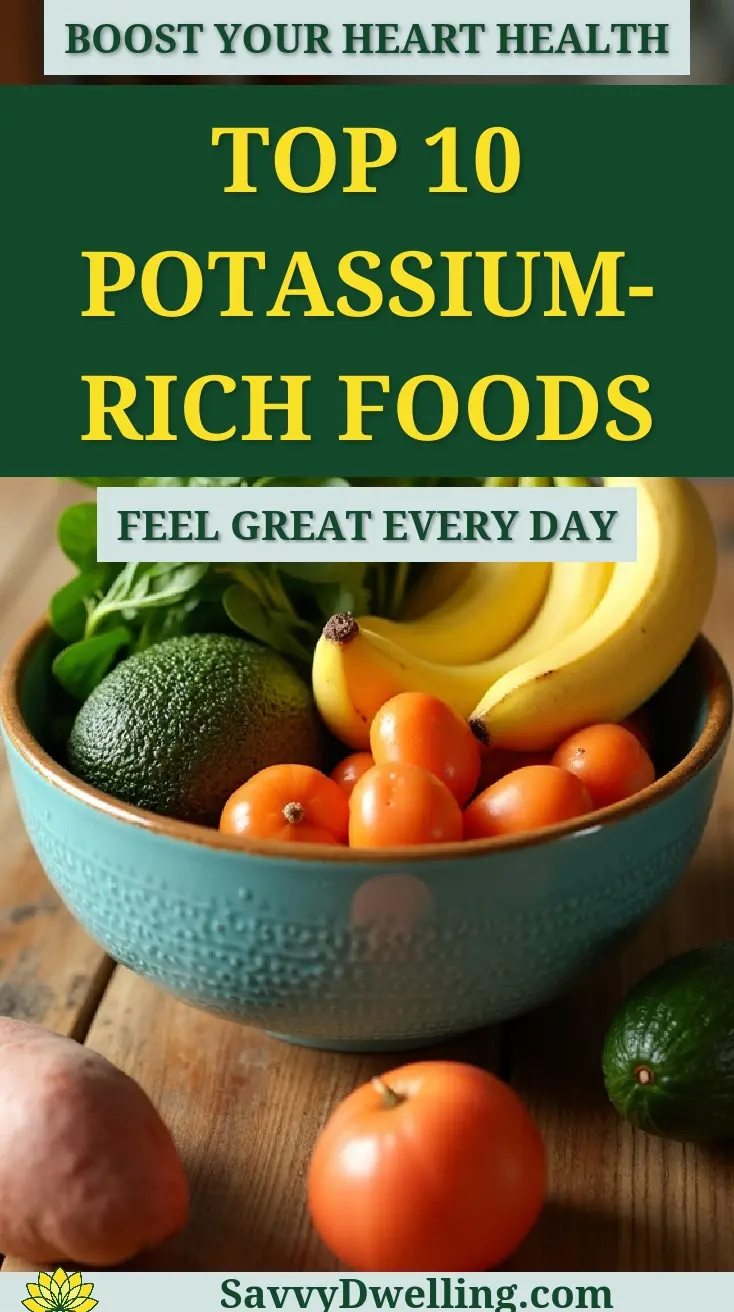The Top 9 Iron-rich Foods to Fight Fatigue and Anemia
Feeling unusually tired even after a good night’s sleep? If you’re dragging yourself through the day and wondering why your energy feels completely zapped, iron deficiency might be the hidden culprit behind your constant exhaustion. Nearly 25% of people worldwide experience iron deficiency, making it one of the most common nutritional shortfalls that directly impacts your daily energy levels.
We’ve spent years researching the most effective, science-backed ways to naturally boost iron levels through food choices that actually work. This guide breaks down the top 9 iron-rich foods that can help restore your energy and support healthy iron levels, plus the exact preparation methods that maximize absorption. You’ll learn not just what to eat, but how to prepare these foods so your body can actually use the iron they provide.
Contents
- At a Glance: The Best Iron-rich Foods
- 1. Beef and Red Meat
- 2. Organ Meats (Liver and Kidney)
- 3. Shellfish and Seafood
- 4. Dark Leafy Greens
- 5. Legumes and Lentils
- 6. Fortified Cereals and Grains
- 7. Tofu and Tempeh
- 8. Nuts and Seeds
- 9. Dark Chocolate and Cocoa
- The Science Made Simple: Why Iron Deficiency Causes Fatigue
- Common Mistakes to Avoid When Increasing Iron Intake
- Frequently Asked Questions
- Your Next Steps to Fight Fatigue
At a Glance: The Best Iron-rich Foods
If you’ve been feeling unusually tired despite getting enough sleep, your body might be sending you a signal about iron deficiency. These nine powerhouse foods can help restore your energy levels and support healthy iron stores without complicated meal planning. Incorporating foods that naturally boost energy can further enhance your vitality and overall well-being. Some of the best foods for a natural energy boost include fruits, nuts, and whole grains, which provide sustained energy without the crash.
The foods below are ranked by their bioavailability and iron content. Some contain heme iron (from animal sources) that your body absorbs more easily, while others provide non-heme iron (from plant sources) that works best when paired with vitamin C.
| Food Category | Iron Type | Iron per Serving | Best For |
|---|---|---|---|
| Beef and Red Meat | Heme | 2.5-4mg per 3oz | Quick iron boost |
| Organ Meats | Heme | 7-18mg per 3oz | Severe deficiency |
| Shellfish | Heme | 3-24mg per 3oz | Sustained energy |
| Dark Leafy Greens | Non-heme | 3-6mg per cup | Daily maintenance |
| Legumes | Non-heme | 3-7mg per cup | Plant-based diets |
| Fortified Cereals | Non-heme | 4-18mg per serving | Convenient breakfast |
| Tofu/Tempeh | Non-heme | 3-4mg per serving | Vegetarian protein |
| Nuts and Seeds | Non-heme | 1-4mg per ounce | Healthy snacking |
| Dark Chocolate | Non-heme | 2-7mg per ounce | Sweet satisfaction |
Your daily iron needs range from 8-18mg depending on your age, gender, and life stage. Women of childbearing age typically need more iron due to monthly blood loss, while men and post-menopausal women require less.
The key to fighting fatigue lies in choosing a mix of these foods rather than relying on just one source. This approach ensures you get steady iron absorption throughout the day while enjoying varied, flavorful meals.
1. Beef and Red Meat
Why It Works
Beef stands out as one of the most bioavailable sources of heme iron, which your body absorbs 15-35% more efficiently than plant-based iron sources. Your body recognizes heme iron as the same type found in your red blood cells, making it the gold standard for combating iron deficiency.
Red meat also contains vitamin B12 and protein, which work synergistically with iron to support healthy red blood cell production. This triple combination makes beef particularly effective for people experiencing fatigue related to anemia.
Iron Content and Serving Size
A 3.5-ounce serving of lean beef provides approximately 2.6 milligrams of iron, covering about 14% of your daily needs. Sirloin and tenderloin cuts offer the highest iron content while maintaining lower saturated fat levels.
Ground beef (93% lean) delivers slightly more iron at 2.9 milligrams per serving, making it both budget-friendly and nutrient-dense. Choose grass-fed varieties when possible, as they typically contain higher iron levels than grain-fed alternatives.
How to Prepare for Maximum Iron Absorption
- Cook beef to medium-rare or medium doneness to preserve maximum iron content
- Pair your beef with vitamin C-rich foods like bell peppers, tomatoes, or citrus
- Avoid drinking coffee or tea with iron-rich meals, as tannins can reduce absorption by up to 60%
- Season with fresh herbs like parsley or cilantro, which contain additional iron and vitamin C
- Use cast iron cookware when possible, as it can add small amounts of supplemental iron to your food
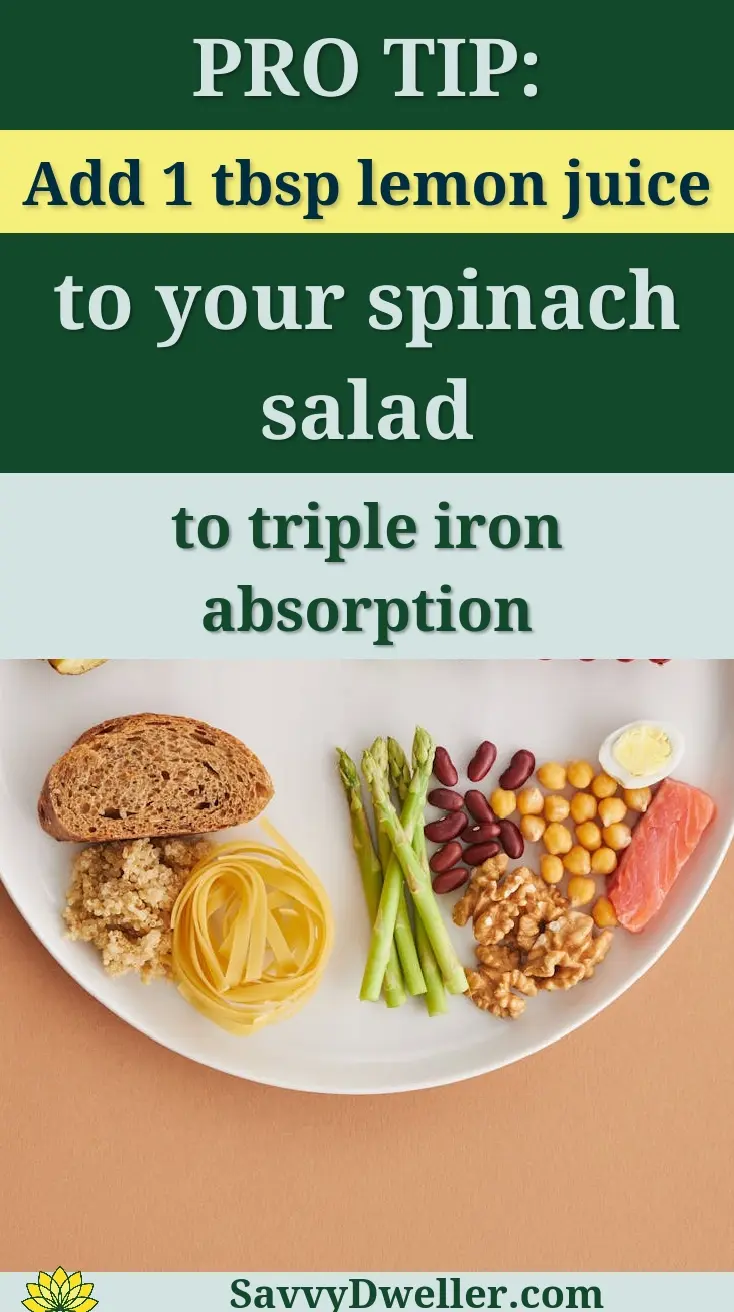
2. Organ Meats (Liver and Kidney)
Why It Works
Organ meats represent nature’s most concentrated iron sources, with liver containing nearly 10 times more iron than regular muscle meat. These nutrient powerhouses also provide folate, vitamin B12, and vitamin A, creating a complete nutritional profile for fighting anemia.
Liver specifically functions as the body’s iron storage center in animals, which explains its exceptionally high iron density. This makes it particularly valuable for people with severe iron deficiency who need rapid replenishment.
Iron Content and Serving Size
Beef liver delivers an impressive 18 milligrams of iron per 3.5-ounce serving, providing your entire daily iron requirement in a single portion. Chicken liver offers 11 milligrams per serving, while lamb kidney provides 12 milligrams.
Even a 2-ounce serving of liver twice weekly can significantly impact your iron levels without overwhelming your system. Start with smaller portions if you’re new to organ meats, as they’re incredibly nutrient-dense.
How to Prepare for Maximum Iron Absorption
- Soak liver in milk for 30 minutes before cooking to reduce any metallic taste
- Cook organ meats quickly over medium-high heat to maintain tenderness and iron content
- Slice liver thinly (¼ inch) and sauté with onions for 2-3 minutes per side maximum
- Add liver to ground beef mixtures for meatballs or burgers to mask the flavor while boosting iron
- Season with acidic ingredients like lemon juice or vinegar to enhance iron absorption
- Never overcook organ meats, as this creates a tough texture and reduces nutrient availability
Also See: 10 Collagen-rich Foods for Youthful Skin & Joints
3. Shellfish and Seafood
Why It Works
Shellfish provide heme iron in a lean protein package, making them ideal for people who want iron-rich foods without excess saturated fat. Many shellfish varieties also contain copper and vitamin B12, which directly support iron metabolism and red blood cell formation.
Unlike red meat, shellfish offer omega-3 fatty acids that can help reduce inflammation associated with chronic fatigue. This dual benefit makes seafood particularly valuable for addressing both iron deficiency and overall energy levels.
Iron Content and Serving Size
Oysters lead the shellfish category with 7.2 milligrams of iron per 3.5-ounce serving, followed closely by clams at 28 milligrams per 3-ounce serving. Mussels provide 5.7 milligrams, while shrimp offers 2.4 milligrams per serving.
A dozen medium oysters can provide more than 100% of your daily iron needs, making them one of the most efficient iron sources available. Even smaller portions of shellfish can make meaningful contributions to your iron intake.
How to Prepare for Maximum Iron Absorption
- Steam shellfish just until they open to preserve maximum iron content
- Add fresh lemon juice while cooking to boost vitamin C and enhance iron absorption
- Avoid overcooking, which can make shellfish rubbery and reduce nutrient availability
- Pair with iron-absorption enhancers like garlic, onions, or fresh herbs
- Save and use cooking liquid from steamed shellfish in soups or sauces to capture leached minerals
Best Shellfish Options
Clams and oysters offer the highest iron concentrations among shellfish varieties. Littleneck clams provide exceptional bioavailability, while Pacific oysters contain additional zinc that supports iron metabolism.
Mussels represent an excellent middle-ground option, providing substantial iron with a milder flavor than oysters or clams. Scallops and shrimp contain moderate iron levels but offer versatility for people new to shellfish consumption.
Fresh vs. Canned Considerations
Fresh shellfish typically contain higher iron levels than canned versions, but canned options still provide significant nutritional value. Canned clams retain approximately 85% of their iron content, making them a convenient and affordable alternative to fresh varieties.
Choose canned shellfish packed in water rather than oil to avoid interference with iron absorption. Rinse canned varieties briefly to reduce excess sodium while preserving the iron-rich liquid for use in cooking.
4. Dark Leafy Greens
Why It Works
Dark leafy greens pack a powerful nutritional punch that goes far beyond just iron content. These vibrant vegetables contain non-heme iron alongside folate, vitamin K, and magnesium—nutrients that work together to support healthy blood formation and energy metabolism.
The chlorophyll in these greens acts as a natural blood builder, supporting your body’s ability to create healthy red blood cells. When you’re feeling drained from low iron levels, these vegetables provide the building blocks your body needs to bounce back.
Iron Content and Serving Size
Here’s what you can expect from a one-cup serving of cooked dark leafy greens:
- Spinach: 6.4 mg of iron (36% of daily needs)
- Swiss chard: 4.0 mg of iron (22% of daily needs)
- Kale: 1.2 mg of iron (7% of daily needs)
- Collard greens: 2.2 mg of iron (12% of daily needs)
Raw servings contain less iron per cup, but cooking concentrates these nutrients significantly. A single cup of cooked spinach contains about six cups worth of raw leaves.
How to Prepare for Maximum Iron Absorption
The secret to unlocking iron from leafy greens lies in proper preparation and smart food pairing. These plant-based iron sources need a little help to become fully available to your body.
Spinach and Kale Preparation Tips
Light cooking actually increases iron availability in leafy greens by breaking down cell walls and reducing compounds that bind iron. Here’s how to maximize your iron intake:
- Steam for 3-5 minutes until leaves are wilted but still bright green
- Sauté with minimal oil over medium heat to preserve nutrients
- Add to soups during the last few minutes of cooking time
- Massage raw kale with lemon juice for 2-3 minutes to soften fibers
Avoid boiling these greens in large amounts of water, as this leaches out water-soluble vitamins and minerals.
Enhancing Plant-Based Iron Absorption
Non-heme iron from plants needs vitamin C to become readily absorbed by your digestive system. Pairing your leafy greens with citrus, bell peppers, or tomatoes can triple your iron absorption rates.
Try these winning combinations:
- Spinach salad with strawberry slices and lemon vinaigrette
- Kale sautéed with red bell peppers and garlic
- Swiss chard added to tomato-based pasta sauce
- Collard green wraps filled with vitamin C-rich vegetables
5. Legumes and Lentils
Why It Works
Legumes and lentils represent some of the most reliable plant-based iron sources available. These protein powerhouses deliver steady energy while supporting healthy blood formation through their impressive mineral profiles. Additionally, they are excellent sources of plant-based protein, making them a smart choice for those looking to enhance their protein intake without animal products.
Unlike many other plant foods, legumes provide both iron and protein in substantial amounts, making them ideal for maintaining stable energy levels throughout the day. Their fiber content also helps regulate blood sugar, preventing the energy crashes that can worsen iron deficiency fatigue.
Iron Content and Serving Size
A half-cup serving of cooked legumes provides these iron amounts:
- White beans: 3.3 mg of iron (18% of daily needs)
- Lentils: 3.3 mg of iron (18% of daily needs)
- Chickpeas: 2.4 mg of iron (13% of daily needs)
- Black beans: 1.8 mg of iron (10% of daily needs)
- Kidney beans: 2.6 mg of iron (14% of daily needs)
These portions also deliver 6-9 grams of protein and substantial amounts of folate, which works alongside iron to prevent anemia.
How to Prepare for Maximum Iron Absorption
Proper preparation makes legumes more digestible while maximizing their iron bioavailability. The key lies in reducing compounds that interfere with mineral absorption.
Best Legume Varieties for Iron
White beans and lentils top the iron-rich food list among legumes, but preparation matters more than variety. Red and green lentils cook fastest and retain the most iron when prepared correctly.
Split peas and black-eyed peas also provide excellent iron content with shorter cooking times than larger beans.
Soaking and Cooking Methods
Follow these steps to maximize iron absorption from your legumes:
- Soak dried beans overnight in filtered water with a splash of lemon juice
- Rinse thoroughly before cooking to remove anti-nutrients
- Cook with iron-rich vegetables like tomatoes or bell peppers
- Add vitamin C sources during the last 10 minutes of cooking
- Season with herbs like parsley or cilantro for additional iron
Avoid adding dairy products or calcium-rich foods to legume dishes, as calcium can significantly reduce iron absorption when consumed together.
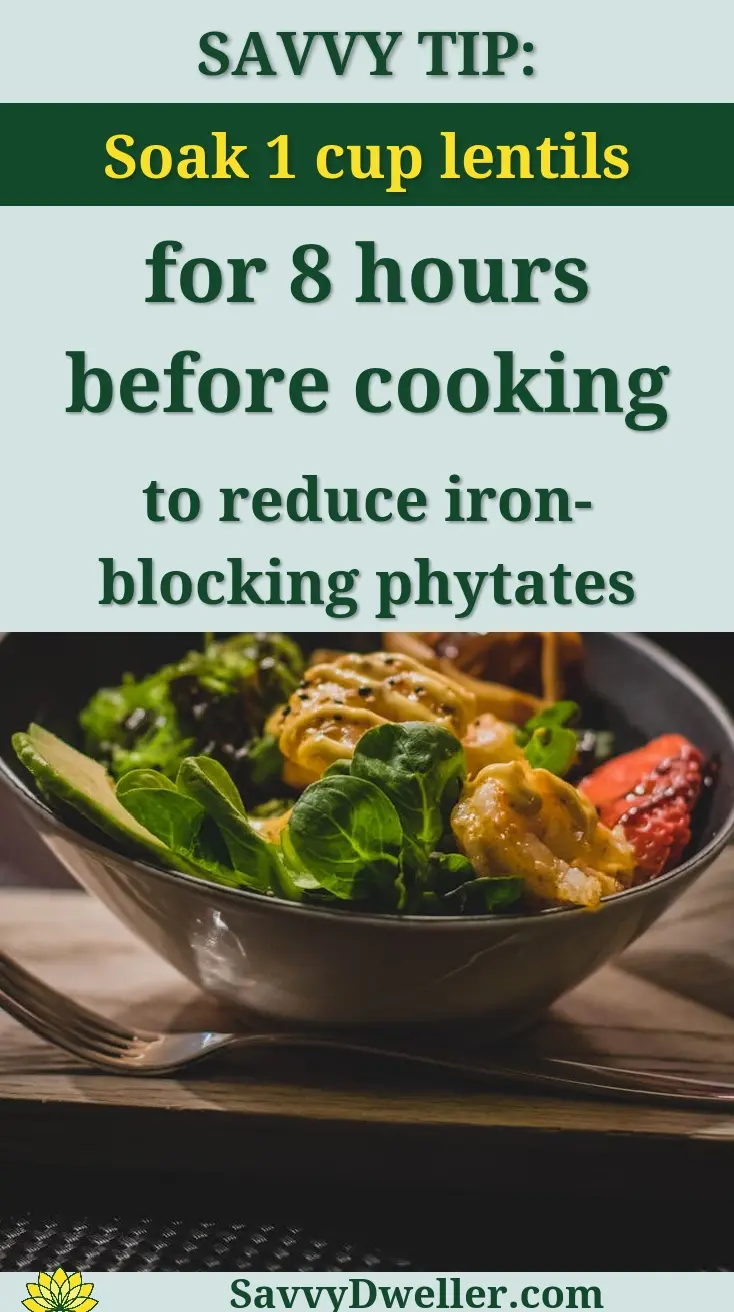
6. Fortified Cereals and Grains
Why It Works
Fortified cereals and grains offer a convenient way to boost iron intake, especially for busy mornings when you need quick energy. These products are enriched with highly bioavailable forms of iron that your body can readily absorb.
Many fortified cereals contain 100% of your daily iron needs in a single serving, making them particularly valuable for people with higher iron requirements. The added vitamins often include vitamin C and B-complex vitamins that enhance iron absorption and energy metabolism.
Iron Content and Serving Size
Iron content varies significantly among fortified products. Here’s what to look for per serving:
- Fortified breakfast cereals: 4.5-18 mg of iron (25-100% of daily needs)
- Enriched oatmeal packets: 3.6-7.2 mg of iron (20-40% of daily needs)
- Fortified pasta: 1.8-3.6 mg per cup (10-20% of daily needs)
- Enriched bread: 0.9-1.8 mg per slice (5-10% of daily needs)
Check nutrition labels carefully, as iron content can vary dramatically between brands and products.
How to Prepare for Maximum Iron Absorption
The type of iron used in fortified foods is typically more absorbable than natural plant-based iron, but smart preparation still matters. Pairing fortified grains with vitamin C sources can boost absorption by up to 300%.
Try these absorption-enhancing combinations:
- Fortified cereal topped with fresh berries or orange slices
- Enriched oatmeal mixed with diced strawberries
- Iron-fortified pasta with tomato-based marinara sauce
- Enriched bread toasted and topped with vitamin C-rich jam
Avoid consuming fortified cereals with coffee, tea, or milk immediately before or after eating, as these can interfere with iron absorption.
7. Tofu and Tempeh
Why It Works
Tofu and tempeh provide plant-based iron alongside complete proteins, making them excellent choices for sustained energy and blood health. These soy-based foods contain compounds called isoflavones that may support overall cardiovascular health while delivering essential minerals.
The fermentation process used to create tempeh actually increases iron bioavailability compared to regular tofu, while also adding beneficial probiotics for digestive health. Both options absorb flavors beautifully, making them versatile additions to iron-boosting meals.
Iron Content and Serving Size
A 3.5-ounce serving (about 100 grams) provides these iron amounts:
- Firm tofu: 2.7 mg of iron (15% of daily needs)
- Tempeh: 2.4 mg of iron (13% of daily needs)
- Silken tofu: 1.6 mg of iron (9% of daily needs)
These servings also deliver 10-19 grams of complete protein, containing all essential amino acids your body needs for energy production and muscle maintenance.
How to Prepare for Maximum Iron Absorption
The key to maximizing iron from soy products lies in preparation methods that enhance mineral availability while adding complementary nutrients. Marinating tofu or tempeh in citrus-based sauces significantly improves iron absorption.
Follow these preparation tips for maximum benefit:
- Press tofu for 15-30 minutes to remove excess water and improve texture
- Marinate in lemon or lime juice for at least 30 minutes before cooking
- Cook with iron-rich vegetables like spinach, bell peppers, or tomatoes
- Add vitamin C-rich herbs like parsley, cilantro, or fresh basil
- Avoid high-calcium additions during the same meal to prevent absorption interference
Pan-frying or grilling creates appealing textures while preserving the iron content better than boiling or steaming methods.
8. Nuts and Seeds
Why It Works
Nuts and seeds offer a convenient way to boost your iron intake while delivering healthy fats and protein. These portable powerhouses contain non-heme iron alongside vitamin E and magnesium, which support overall energy metabolism. Notably, walnuts stand out among other nuts for their unique health benefits. Including walnuts in your diet can provide a variety of advantages similar to those offered by other nuts, such as improved heart health and enhanced brain function.
Unlike many plant-based iron sources, nuts and seeds require no cooking or preparation. You can easily add them to meals or snack on them throughout the day to maintain steady energy levels.
Iron Content and Serving Size
A quarter-cup of pumpkin seeds delivers about 2.5 milligrams of iron, while the same amount of cashews provides roughly 2 milligrams. Sesame seeds and tahini also rank high among iron-rich foods, with two tablespoons of tahini containing approximately 2.7 milligrams.
Pine nuts, pistachios, and sunflower seeds round out the top iron foods list. A small handful (about one ounce) gives you between 1-1.5 milligrams of iron plus other essential nutrients.
How to Prepare for Maximum Iron Absorption
Combine your nuts and seeds with vitamin C-rich foods to enhance iron absorption. Sprinkle pumpkin seeds over a spinach salad with orange segments, or mix cashews into a stir-fry with bell peppers.
Avoid consuming nuts and seeds with calcium-rich dairy products or coffee, as these can interfere with iron uptake. Instead, pair them with iron-rich foods from your list for a synergistic effect.
Pumpkin Seeds and Cashews
Raw pumpkin seeds contain the highest concentration of iron among seeds, making them one of the top foods with iron. Roast them lightly with a pinch of sea salt for a crunchy snack that supports energy levels.
Cashews work exceptionally well in both sweet and savory dishes. Blend them into creamy sauces for iron-rich meals, or eat them raw as a mid-afternoon energy boost when fatigue strikes.
Raw vs. Roasted Considerations
Raw nuts and seeds retain slightly more iron content than their roasted counterparts, but the difference is minimal. Roasting does reduce some nutrient content, but it also improves digestibility and flavor.
Light roasting at low temperatures preserves most of the iron while making nuts easier to digest. Avoid heavily salted or processed varieties, which often contain additives that may interfere with nutrient absorption.
9. Dark Chocolate and Cocoa
Why It Works
Dark chocolate ranks surprisingly high on the iron food list, containing more iron per ounce than many traditional iron sources. Cocoa beans naturally concentrate iron during processing, making dark chocolate an enjoyable way to support your energy levels. This delicious treat offers several health benefits that contribute to overall well-being, making it a great addition to your diet.
The flavonoids in dark chocolate may actually enhance iron absorption when consumed with other iron-containing foods. This makes it both a treat and a functional addition to your iron-rich food strategy.
Iron Content and Serving Size
One ounce of dark chocolate (70% cacao or higher) contains approximately 3.9 milligrams of iron, making it one of the most iron-rich foods you can enjoy as a dessert. Unsweetened cocoa powder packs even more iron, with two tablespoons providing about 1.4 milligrams.
A small square of quality dark chocolate daily can contribute meaningfully to your iron intake. Choose varieties with at least 70% cacao content to maximize both iron content and health benefits.
How to Prepare for Maximum Iron Absorption
Enjoy dark chocolate with vitamin C-rich fruits like strawberries or oranges to boost iron absorption. The combination creates a delicious dessert that supports your body’s ability to utilize this plant-based iron source.
Add unsweetened cocoa powder to smoothies with spinach and banana for a chocolate-flavored drink that combines multiple iron rich foods. This approach masks the taste of leafy greens while maximizing nutritional benefits.
The Science Made Simple: Why Iron Deficiency Causes Fatigue
How Iron Supports Energy Production
Iron serves as a critical component of hemoglobin, the protein in red blood cells that carries oxygen throughout your body. When iron levels drop, your cells receive less oxygen, leading to the persistent tiredness characteristic of iron deficiency. This fatigue can be one of the key signs of iron-deficient anemia, which affects many people. Recognizing the full range of symptoms is essential for timely diagnosis and treatment.
Iron also plays a vital role in cellular energy production within the mitochondria, your cells’ power plants. Without adequate iron, your body struggles to convert nutrients into usable energy, leaving you feeling drained even after rest.
Understanding Heme Vs. Non-heme Iron
Heme iron comes from animal sources like red meat and shellfish, and your body absorbs it much more readily than plant-based iron. Non-heme iron from foods rich in iron like spinach and lentils requires more effort from your digestive system to process.
Your body absorbs about 15-35% of heme iron compared to only 2-20% of non-heme iron. This explains why foods that are high in iron from animal sources often provide faster relief from iron deficiency symptoms.
Who’s Most at Risk for Iron Deficiency
Women of childbearing age face the highest risk due to monthly blood loss during menstruation. Pregnant women need nearly twice the normal iron intake to support both their own health and fetal development.
Vegetarians and vegans may struggle with iron deficiency since they rely entirely on non-heme iron sources. Athletes, especially endurance runners, also face increased risk due to higher iron losses through sweat and foot strike hemolysis.
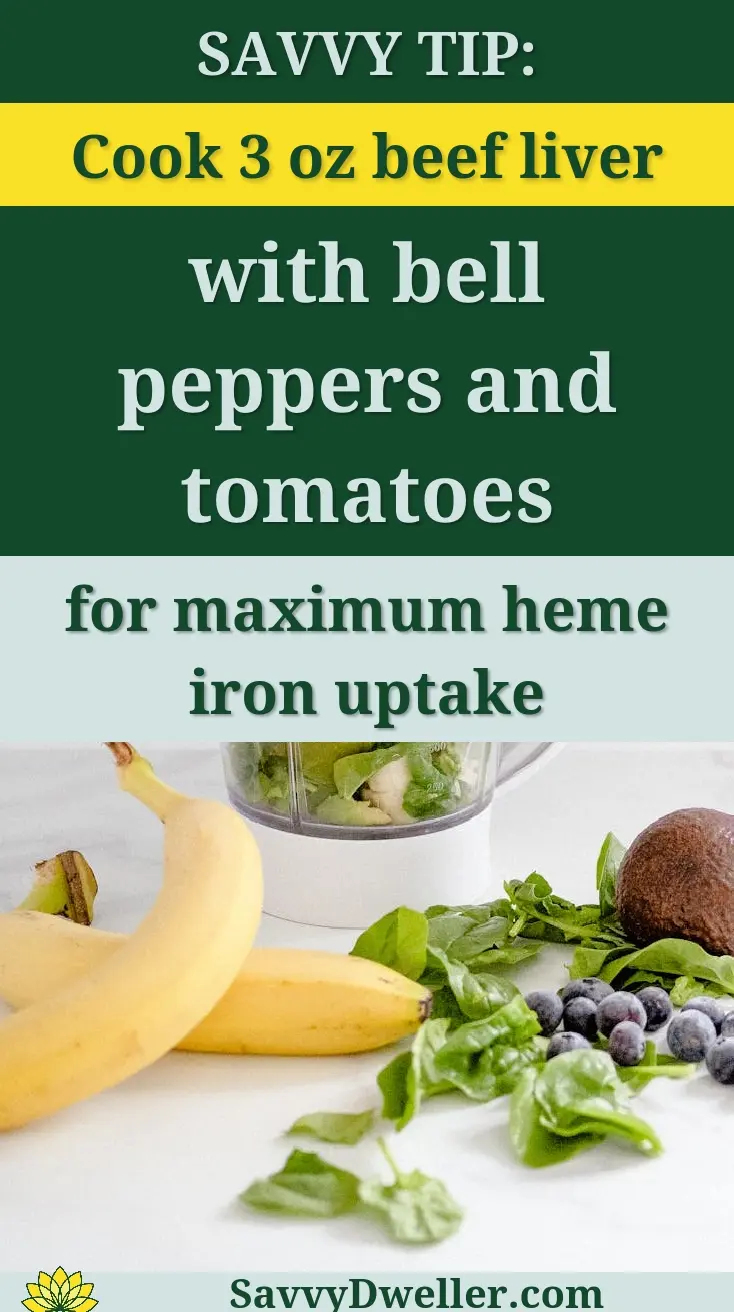
Common Mistakes to Avoid When Increasing Iron Intake
Foods That Block Iron Absorption
Calcium-rich dairy products significantly reduce iron absorption when consumed together with iron foods. Wait at least two hours between eating high iron foods and drinking milk or eating cheese to maximize nutrient uptake.
Coffee and tea contain tannins that bind to iron, preventing your body from absorbing this crucial mineral. Avoid drinking these beverages within one hour of eating iron-rich foods for optimal absorption.
Timing Your Iron-rich Meals
Your body absorbs iron most effectively on an empty stomach, but this can cause digestive upset in sensitive individuals. If you experience nausea, consume iron-containing foods with a small amount of vitamin C-rich food to enhance absorption while protecting your stomach.
Spread your iron intake throughout the day rather than consuming large amounts in single meals. Your body can only absorb a limited amount of iron at once, making frequent smaller doses more effective than infrequent large ones.
Overcooking Iron-rich Foods
Excessive heat breaks down the cellular structure of plant-based iron sources, potentially reducing their bioavailability. Light steaming or sautéing preserves more iron content than boiling or prolonged cooking methods.
Cooking in cast iron pans can actually increase the iron content of foods, especially acidic dishes like tomato-based sauces. This traditional cooking method provides a simple way to boost iron intake from foods you’re already eating.
Frequently Asked Questions
How Long Does It Typically Take to See a Reduction in Fatigue When Increasing Iron Intake?
You may start to feel less tired within a few weeks, but significant improvement often takes 1-2 months of consistent iron-rich eating. This timeline allows your body to rebuild iron stores and improve hemoglobin levels. For best results, combine dietary changes with vitamin C-rich foods like citrus fruits or bell peppers to boost absorption at every meal.
Is There a Risk Of Iron Overload From Eating Too Many Iron-rich Foods?
For healthy individuals, iron overload from diet alone is rare because the body regulates absorption. However, people with conditions like hemochromatosis (a genetic iron storage disorder) should monitor intake closely. Stick to recommended daily allowances (18mg for women, 8mg for men) and avoid excessive consumption of organ meats or fortified foods without medical advice. Incorporating heavy metal detox foods and supplements can also support overall health and may assist in reducing toxic metal levels in the body.
When Should Someone Consider Taking Iron Supplements Instead Of Relying on Diet Alone?
Supplements are best used under a doctor’s guidance if blood tests confirm severe deficiency or when diet fails to improve levels. They may be necessary for those with absorption issues, heavy menstrual bleeding, or pregnancy. Never self-prescribe supplements, as incorrect dosing can cause side effects like constipation or toxicity.
What Are Some Simple Meal Ideas That Combine Multiple Iron-rich Foods for Better Absorption?
Try a spinach and lentil soup with a side of orange slices to pair non-heme iron with vitamin C. For a heme iron boost, add lean beef to a fortified pasta dish with tomato sauce. These combinations enhance absorption and make meals more effective against fatigue. Including iron-rich foods can help fight chronic fatigue and boost energy levels. Maintaining a diet that supports energy can make a significant difference in how you feel throughout the day. Keep portions balanced to avoid overwhelming your system.
Your Next Steps to Fight Fatigue
If you’ve been struggling with persistent tiredness or suspect iron deficiency, these nine powerhouse foods can genuinely transform how you feel. Start with just two or three foods from this list and gradually build them into your weekly meal rotation. Remember to pair plant-based iron sources with vitamin C-rich foods like citrus or bell peppers for maximum absorption.
Small changes in your kitchen can lead to significant improvements in your energy levels within just a few weeks. The key is consistency rather than perfection – even adding iron-rich snacks like pumpkin seeds or a square of dark chocolate can make a meaningful difference. Your body will thank you for these simple yet powerful nutritional upgrades.
Ready to explore more wellness strategies that actually work? Check out Savvy Dwelling for research-backed solutions to common health and home challenges. Start incorporating these iron-rich foods today and experience the energy boost you’ve been searching for.
Also See: Are You Getting Enough B9? Top 6 Vitamin B9 Foods

